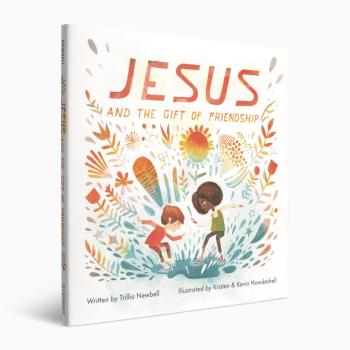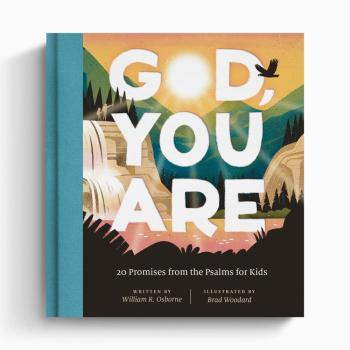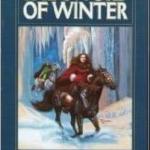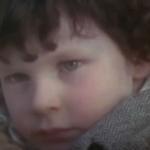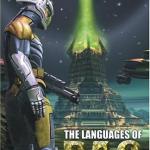I’ve never written a book for children of any kind, let alone one for toddlers. But based on what I’ve read (which, with a three-year-old and a one-year-old at home, has to be approaching thousands of children’s books), it seems that there are two dangers: the one over-simplifying things and consequently either wandering into heresy or simply saying nothing; the other providing too much theological substance, and consequently going over the toddler’s head. Which is easy to do, because they’re short. The Big Book of Bible Stories for Toddlers doesn’t hit either of these dangers, and as a result is about as good a book of Bible stories for toddlers as you can find.
That’s not to say it’s perfect, but it is good. The three biggest weaknesses I spotted were 1) the disconnect between the Bible stories and the catechetical questions; 2) the occasionally odd choice of illustrations; and 3) the assumption of technology. As an example of the first, the story about Abraham is as follows:
“God told a man named Abraham, “Count the stars, if you can. That is how big your family will be.” Abraham was old and did not have any children, but he believed God. God said, “I will bless the whole world through your family.” And that’s what He did.”

Which is fine, that’s a perfectly fair summary of the what a child needs to know about Abraham. But then on the same page we get the “Big Picture Question”, which is “How did God bless the whole world?” and the “Big Picture Answer”, which is “God sent a Savior, Jesus, to bless the whole world.” Now, theologically this is obviously is correct, both in its strict truth and in that Jesus is the fulfillment of the promise made to Abraham. But that’s assuming a lot of details in between the two that aren’t provided.
As an example of the second weakness (the occasionally odd choice of illustrations): the Jonah story is illustrated not by a storm or a big fish or Jonah praying in the dark (that’s the easy choice I’d have gone with), but by Jonah and the vine. Which again is accurate, but requires filling in a lot of blanks.
Third, this book comes with all the modern requisite gadgets. That is, it assumes that the reader has access to gadgets which, when engaged in conjunction with the book, will animate the pictures, provide additional content, and, I don’t know, dispense grape juice or something. I’ll not go on my rant about this particular subject here. The short version is that any time you encourage a child (or an adult) to set down a book and pick up a computer or phone, you might as well throw the book away because they’re not coming back.
Anyway, those are the weaknesses. Overall, as I said the book is excellent. Despite the title and the somewhat similar graphics (to my untrained eyes, that is), this book is not in the family of the Big Picture Story Bible (the best Bible available for children, as far as I’m concerned). It is nonetheless an excellent book that really does give a decent Biblical theological overview in a bare minimum of fairly simple words. This is a great book to start reading to your… well, newborn, I suppose. It’s never too early to read to your kids; and it’s really never to early to start sharing the Gospel with them. This book helps with both.
Dr. Coyle Neal is co-host of the City of Man Podcast and an Assistant Professor of Political Science at Southwest Baptist University in Bolivar, MO.




